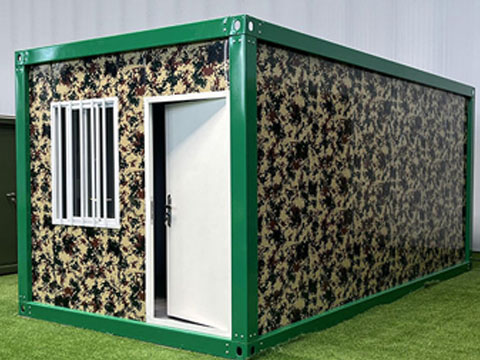When a large-scale construction project commences, worker dormitories are typically established near the site to ensure project progress. Traditional dormitories may take several months to complete, but modular container housing can deliver safe and comfortable worker accommodations within just 2-4 weeks.
Why are modular container homes superior to traditional dormitories for worker accommodations?
—The core advantages lie in speed, cost-effectiveness, and adaptability.
Exceptionally fast construction speed: From factory to site in just weeks
- Traditional dormitories require on-site foundation laying, bricklaying, wiring, and interior finishing, with progress susceptible to multiple factors.
- Modular container housing sees 90% of work completed in the factory, requiring only on-site assembly.
Cost savings: 30% reduction in total expenses
While project managers often focus on upfront costs, modular container housing delivers savings throughout its lifecycle:
- Reduced labor costs: 60% fewer on-site workers compared to traditional construction, eliminating expenses for skilled bricklayers and electricians.
- Minimized material waste: Factory production controls material usage, achieving a waste rate below 5%, compared to 15-20% for on-site construction.
- Reusability: After project completion, container housing can be disassembled, transported to new sites, and reassembled, avoiding the demolition waste and reconstruction costs of traditional dormitories.
Adaptability to Any Construction Site Environment
- Minimal foundation requirements: Requires only a flat concrete slab or gravel base, eliminating complex excavation work in mountainous or wet regions.
- Weather resistance: Features 100mm thick rock wool insulation and waterproof sealant, withstanding extreme cold and heat.
- Flexible expansion: Accommodation capacity scales from 20 to 200 occupants by adding modules without disrupting existing living spaces.


Step-by-Step Guide to Building Worker Dormitories with Modular Container Housing
Constructing worker dormitories using modular container housing involves more than simply shipping containers to the site. It requires a systematic approach to ensure safety, comfort, and compliance. Here is our proven four-step process:
Step 1: Needs Assessment and Custom Design
First, clarify core requirements to avoid overdesign or functional gaps:
- Capacity and Layout: Determine worker numbers (single or double occupancy) and allocate common areas (bathrooms, showers, laundry, dining). For example, a 40-person dorm typically uses 10 20-foot containers (8 for bedrooms, 2 for common areas).
- Local Regulations: Verify construction site accommodation standards (e.g., EU fire safety codes, Southeast Asian ventilation requirements) to ensure compliance.
- Site Conditions: Provide topography photos and climate data. We will adjust insulation thickness, foundation design, and wind resistance (up to Category 12 typhoons) based on actual conditions.
Our team will deliver 3D design plans and detailed quotes within 5 days, including furniture, appliances, and on-site installation services.
Step 2: Factory Prefabrication (7-14 days)
Upon design confirmation, our factory commences production. The process includes:
- Frame Reinforcement: High-strength steel frames are reinforced for repeated disassembly and reassembly.
- Insulation & Soundproofing: Walls and ceilings feature rock wool insulation; soundproof panels between bedrooms reduce noise below 30 decibels.
- Electrical & Plumbing: LED lighting, power outlets, and water heaters are pre-installed with fire-rated wiring compliant with local standards.
- Furniture Configuration: Each bedroom includes bunk beds (rated ≥200 kg), wardrobes, and desks; common areas feature washing machines and dining tables.
You can monitor production progress via real-time video feeds to ensure on-time delivery.


Step 3: Transportation & Site Preparation (1-3 days)
We coordinate with professional logistics teams to transport prefabricated modules to the site—stackable containers reduce shipping costs by 40%. Meanwhile, the on-site team only needs to:
- Level the ground and lay a simple concrete foundation (gravel can be used for temporary sites).
- Arrange temporary power and water connections (we provide compatible connectors).
Step 4: On-site Assembly and Commissioning (3-7 days)
Assembly is completed using cranes and bolts, eliminating on-site welding. Key steps include:
- Stacking or arranging modules according to design drawings.
- Connecting electrical and plumbing systems (prefabricated interfaces ensure rapid assembly).
- Install external staircases, handrails, and fire extinguishers.
- Test all systems (power, water, heating) and conduct fire safety inspections.
A 50-person dormitory can be fully assembled and operational within just 5 days.
Our modular worker housing units are ideal for the following industries
- Construction and infrastructure projects
- Mining and resource extraction
- Oil and gas fields
- Temporary staff accommodation for large events and music festivals
- Disaster response and temporary housing
Contact us today for a free camp planning consultation and quote! Let our expert team tailor the perfect worker accommodation solution for your project needs.



